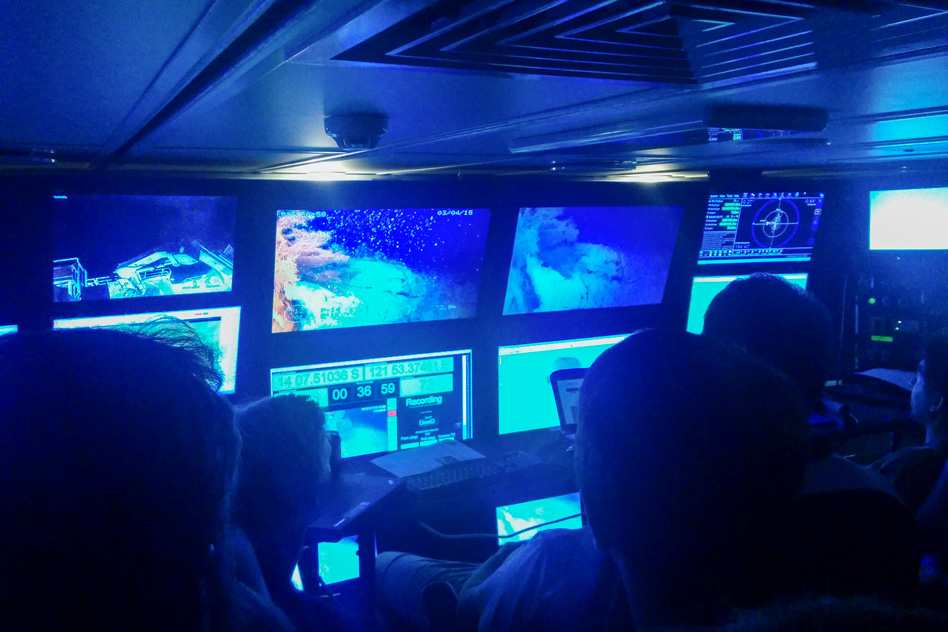Autonomous underwater vehicle robots get cognitive control
May 11, 2015

Researchers watch underwater footage taken by various AUVs exploring Australia’s Scott Reef (credit: MIT)
MIT researchers have developed an autonomous mission-planning system for “autonomous underwater vehicles” (AUVs) that gives these undersea robots “cognitive” capabilities.
Scientists have been deploying increasingly capable underwater robots to map and monitor pockets of the ocean to track the health of fisheries and survey marine habitats and species. But when deploying these AUVs, much of an engineer’s time is spent writing scripts to direct a robot to carry out a mission plan.
MIT’s new programming approach now allows mission planners to specify high-level goals; a robot then performs high-level decision-making to figure out how to achieve these goals.
For example, an engineer may give a robot a list of locations to explore, along with any time constraints, as well as physical directions, such as staying a certain distance above the seafloor. The robot can then plan out a mission, choosing which locations to explore, in what order, and within a given timeframe. If an unforeseen event prevents the robot from completing a task, it can choose to drop that task or reconfigure the hardware to recover from a failure on the fly.
Lost in space
The system is similar to one that Brian Williams, a professor of aeronautics and astronautics at MIT, and principal developer of the new mission-planning system, developed for NASA following the loss of the Mars Observer spacecraft that lost contact with NASA days before its scheduled insertion into Mars’ orbit in 1993.
“There were human operators on Earth who were experts in diagnosis and repair, and were ready to save the spacecraft, but couldn’t communicate with it,” Williams recalls. “Subsequently, NASA realized they needed systems that could reason at the cognitive level like engineers, but that were onboard the spacecraft.”
By giving robots control of higher-level decision-making, Williams says such a system would free engineers to think about overall strategy, while AUVs determine for themselves a specific mission plan. Such a system could reduce the size of the operational team needed on research cruises and also enable robots to explore places that otherwise would not be traversable, such as remote recesses of the sea. There are also probable military uses.
This research was funded in part by Schmidt Ocean Sciences. The underlying technology was supported in part by Boeing Co., the Keck Institute of Space Sciences, the Defense Advanced Research Projects Agency, and NASA.